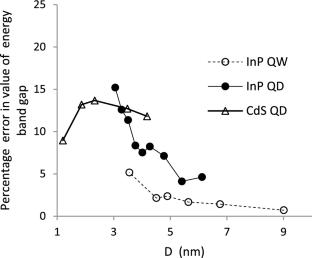In the present paper, a simple qualitative model is proposed to study the effect of dimension and crystal structure on the energy band gap of semiconducting nanomaterials. The energy band gap variation is studied for nanoparticles, nanowires and thin films. The model takes into account the crystal structure and to incorporate the effect of crystal structure on energy band gap, lattice packing fraction is included in the mathematical formulation. The model does not involve any approximation or adjustable parameter. The study on nanosized semiconductors is performed. The model results depict the increase in the energy bandgap of nanosized semiconductors with reduction in size to nanoscale. Based on dimensionality, increment in energy band gap of spherical nanoparticles (NP’s) is more than that in cylindrical nanowires (NW’s) and thin films. The model results are found in good agreement with compared experimental and stimulated data. Drastic increase in energy band gap in nano-semiconductor of diameter or height less than 10 nm is due to the quantum confinement of charge carriers with increase in the surface area/volume ratio. With reduction in size of the Nano semiconductor, increase in the Band gap is observed leading to the blue shift. The energy band gap dependence on size in the nanorange has opened the possibility of tuning the energy band gap of the nanomaterials and use them in the opto-electronic devices.




